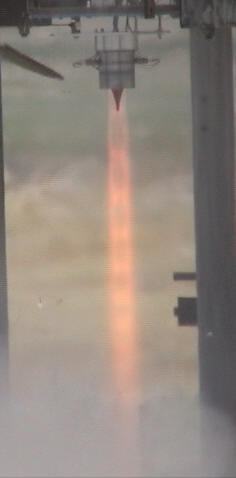Not really. The increase in performance for an aerospike is over a range of altitudes- it doesn't get over- or underexpanded like a de Laval nozzle would, so it is closer to optimal at more different altitudes. De Laval designs are great for when you are dealing with one elevation. This is why aerospikes have been considered for spaceplanes more than normal staged launchers.
The fact that HPR projects have gone to 100K is somewhat irrelevant to this as well. Sure, they reach that altitude, but long after motor burnout. The motor burn is all in basically 100% atmosphere.
To the OP- I absolutely think you should try it! Even if it doesn't gain anything, it would be pretty darn cool just to make it at all!
Surprisingly, eventhough the aerospike has been known about since the 60’s, there still has not been a test of the aerospike on an actual rocket at near vacuum conditions.
The best that has been done on a rocket so far is to about 30,000 feet, but this just reduces the ambient pressure to about 1/3rd that of sea level. But getting to 100,000 feet reduces the air pressure to about 1/100th sea level, where the ISP of a rocket is close to that of the vacuum value.
But flights to 100k are within the capabilities of amateur and student teams, at least for solid rockets. This has been by coasting to that altitude though, i.e., motor not firing then. Then to test the aerospike ISP at the high altitude would require attaching an additional stage to a rocket that is 100K capable, and igniting this stage only at the 100K altitude. This would require removing some recovery and/or instrumentation mass on the lower stage rocket so the original 100K altitude could still be achieved.
(Note Bene: given the dangerous premature ignitions at the Fireballs 27 meet of upper stage solid motors used by student teams it is strongly advised that this only be undertaken under supervision of professional rocket engineers experienced with upper stage rocket motors since to get reliable ignition at high altitude requires different and more dangerous methods than those commonly used on solids.)
To illustrate, how important it is to test the vacuum aerospike, the Falcon 9 first stage has a vacuum ISP of 312s. But the upper stage has a vacuum ISP of 342s. But a rule of thumb among propulsion engineers is that “
every 10% increase in ISP gives a 100% increase in payload.”
Then amateur or student teams could make a key experimental advance that neither NASA nor the billion-dollar launch companies have made.
Bob Clark








